Paula R.C. Readman's Blog, page 47
April 5, 2021
Just Sometimes…
I hate starting something and not finishing it. I hear my grandmother’s voice so clearly when I have to admit defeat. “Oh, just like Paula to start something, and never finish it before moving on to the next thing.”
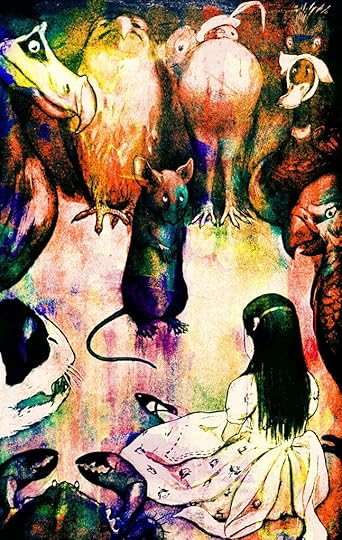
For days now, I’ve been caught between two writing projects. Working on my new novel, and completing a not so short story. Four chapters in on the novel, but only 1,490 words in on a 7,000 word short story. The novel is already mapped out and it’s a case of getting the words down, and editing it within an inch of its life.
The short story has been a painful struggle to find a plot line something I was able to get my teeth into. I knew who were my main characters were but mapping their journey in my tale Down Another Bloody Rabbit Hole was a none starter. For days, in between finishing the edits on Seeking the Dark, I had been working on my Alice 13 submission off and on in some vain hope I would reach a point where it would start writing itself.
I had a vague idea from the beginning where I wanted my story to go, but no clear idea of how to get there and the ending was a bit ambiguous. As I worked on it a couple of sparks ignited ideas which excited me, but they soon fizzled out so I was left with nothing to carry the plot line forward. I tried the trick of going to sleep thinking about my Alice problem but woke the next morning with an empty head as far as new ideas went.
“I don’t see how he can ever finish, if he doesn’t begin.” —Chapter 9, The Mock Turtle’s Story
From Alice’s adventures in Wonderland by English author Lewis Carroll published 26th November 1865
I listened to the audio book of Alice in Wonderland on Youtube hoping to find something to give me a sense of direction, but again nothing. My given theme was crime, so it wasn’t as though it was difficult for me to write something I would be happy with. I couldn’t kill Alice off as she needed to be alive to carry on her adventure in the next story in the anthology. I tried thinking outside the box by reshaping the characters from the original story which I had already done with White Rabbit. I found a site on the internet that not only listed the characters from the book, but gave you a break down in the symbolism behind the craziness which is the Alice’s adventures in Wonderland.
Once I had finished my household and garden chores, along with my Seeking The Dark book edits, I decided to focus on the Alice story. I sat for a day playing around with ideas I had listed on a writing pad, but nothing came to me. I then threw in the towel and contacted my dear friend to let her know I couldn’t complete my story. Gopi was kind enough to say that I had four months to work on it. I know four months is a long time, but I felt it was important to say now to allow her to seek out a new writer.
I felt a weight lift from my mind. Now I can focus all my energy into writing my Granny Wenlock novel. Sometimes the right thing to do is to step back. I know if Granny hadn’t been breathing down my neck, and I just had Alice to think about I would have found a plot line straightaway, one I would be happy with. Nothing goes to waste with writing so I’m sure my Alice story will find a new home in a rewrite and one I will be far happier with it.
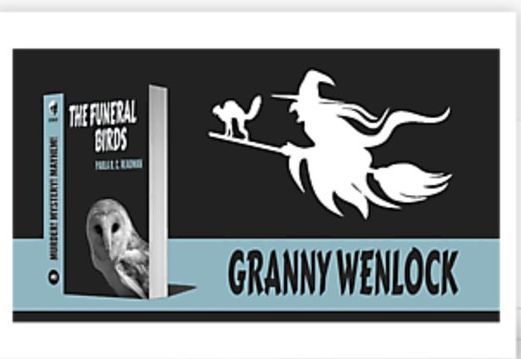
Have a great week everyone. I’ll catch up with you again soon.
April 1, 2021
Tearoom Guest’s Chat: Jack Steele
Welcome to Clubhouse Chat page. Those of you who are not a member won’t be aware that the location of the Clubhouse is shrouded in mystery. The only way to visit it is via membership or an invite to the tearoom. Every few days, I’ll be sharing a conversation with all sorts of writers and authors at different levels of their writing careers. Over tea and cakes, or maybe a glass of something stronger, I shall be chatting with my guest about their work in progress, or latest book release.


Today I’m welcoming to the tearoom: Jack Steele. Welcome to the clubhouse tearoom, Jack.
Thanks for inviting me to this beautiful tearoom, Paula. Looking at the chalkboard I see that today’s special is a cream tea. So, on this chilly day could I have one of those with a large pot of tea please.
Thank you so much for join me today. I’m just a little sad that it wasn’t a warmer day otherwise we could have sat in the clubhouse garden. Still the view is nice. Let’s start by asking you Is there anything about you that your readers may be surprised to find out?
I used to be a presenter on local radio. It began when I managed a Saturday Sports programme on King’s Lynn Hospital Radio and presented an hour long show on a Wednesday evening. I would visit patients on the wards and have a chat with them. During this time, I would gather their music requests and they would listen in for the hour-long request show which I also co-presented. I gained such a knowledge of different music genres and I became part of a team who presented a similar request programme on the local independent station KLFM, which I thoroughly enjoyed.
Another subject I discussed with the patients was their reading material and the majority of genres were romance or crime fiction. They would recommend authors and I would head over to the local library and borrow books based on their recommendations. It was thanks to them that I eventually realised what was my preferred genre.
When you first began your writing journey what drew you to your chosen genre?
I watched lots of detective series on television from an early age. Dixon of Dock Green, Juliet Bravo, The Sweeny, Starsky and Hutch and Line of Duty have all been favourites throughout the years. Then there were the movies – especially ‘Along Came A Spider’,based on the bestselling book by James Patterson. I loved the plot twists and cliff hanger endings and so I began to read all of his Alex Cross books.
Each author tackles the premise that a detective investigates a crime with his/her team using all available resources to track down the perpetrator, in a unique way. I discovered the more crime fiction books I read, the more discerning I became. Some were too descriptive with little action, others had too many characters which confused me. So, I decided to write in my own style. A fast-paced page turner with cliff hangers, moral dilemmas and believable characters.
Thanks for the offer of another cuppa Paula? I wouldn’t mind a refill. Thanks. There is definitely a chilled atmosphere here and I love the ceramic Stone Angels looking down at us from the shelves.
 Jack Steele
Jack SteeleWhat did you learn when writing your book? In writing it, how much research did you do?
When I reached 40 it was a milestone that I wanted to mark by writing the crime fiction novel that had been in my head for an exceptionally long time.
Research is extremely important to me because my story is set where I grew up in London’s East End. I needed to revisit the pubs, restaurants and places that featured in the book because I wanted the reader to feel they were in those places. It was vital that they felt the atmosphere and emotions of the characters. One of the investigation team lives on the Bannister House Estate with his mother and that is where I was raised by mine.
My wife accompanied me to Canary Wharf, Poplar and Homerton, we had a meal in the ‘Gun’ Pub on the banks of the River Thames. It was here that the lead detectives would discuss the case over a drink. During my research of the pub, I discovered that Lord Nelson and Lady Hamilton would meet in a private room upstairs. The barman was kind enough to show me that historic room.
There was a dramatic scene at the Barbican, so we had a good look around there and all the other locations in the books, like Brick Lane for example.
Did you uncover things about yourself while writing your books, whether that be a long-forgotten memory, a positive experience etc.
I realised as the first draft was written that I should learn more about the craft of writing, so I signed up for a creative writing course as well as two workshops with the Nottingham Writer’s Studio. They taught me a lot and I developed my story using the experience gained from them. I sent my manuscript to three editors I knew and the suggestions that came back were extremely helpful with one adamant that these characters should be used in a series. With that in mind I spent another three years researching locations, character traits and gangland villains.
We went on the East End Gangster Tour, being shown around the haunts of the Krays as well as others. It was extremely informative and useful research.
The tour guide was the movie actor Stephen Marcus who appeared in many films including ‘Lock, Stock and Two Smoking Barrels’.
I eventually had the confidence to publish my first book in the series ‘Loose Cannon’ and it was an extremely nervous time waiting for the reviews. I was so thankful when the readers and reviewers awarded it four and five stars. They loved the characters, locations and the short gripping chapters. Many were crying out for the sequel so that’s when I knuckled down to write ‘Long Shot’ the second in the series.
The idea came from a visit to Richmond Park which has a poets corner and King Henry’s Mound on which there is a telescope with a clear unrestricted view of St Paul’s Cathedral. This would form the front cover for Long Shot. The characters were already established, and I found writing the second book a delight. Even though it can be read as a standalone book there were references to the first book too. The dilemma of writing a stand-alone versus a series of books was an interesting one and I researched other authors who had been through the same experience. I even contacted them and used some of their material with their permission in an essay that I posted on my website.
The third and final book in the trilogy was ‘Dark Secrets’ which stemmed from a visit to Barcelona and the Capuchin Crypt. Seeing the Crypt of the Skulls of Capuchin monks that had died there was a haunting image Paula. Throughout the book I wanted the reader to feel the threat of danger to the investigation team concluding with a dramatic finale.

Were any of your characters inspired by real people?
Yes, all the characters are based on people I have met in real life. I have mixed with quite a few unsavoury characters that have provided me with a rich mix of menace and a darkness needed for the villains and psychopaths that appear in my trilogy. During the 70s-80s I started boxing training and loved going to the fight nights to cheer on our best boxers. I remember meeting Professional British Champions like Alan Minter who held the European Middleweight title and Heavyweight boxer Joe Bugner. Some of the other faces in the crowd had the look of gangsters and we were advised not to get in their way. I read Lennie McClean’s biography. He took up boxing and was known as The Guvnor because of his need to be the top gangster in town. All these characters are to be found within my books.
The investigation team are based on work colleagues that I have got to know during my 40 plus years in the printing industry. I still work full-time which can make writing difficult, but I have a routine to enable me to carry on writing which I love to do.
I would like to finish by thanking all my readers, editors, bloggers and Crime book club friends who have been so supportive through this process. Their encouragement drives me on to write more.
I’ve loved our chat Paula and thanks for inviting me into your beautiful tearoom. The cream tea is definitely one of the best I have tasted in a while.
My pleasure, Jack you must come and join me again for another chat. Check out the link below to find out more about Jack’s books.
Website : www.jacksteeleauthor.com

If you want to find out more about Clubhouse Members’ Books, don’t forget to check out the Clubhouse Bookshops too.
Death~ Let’s Face It
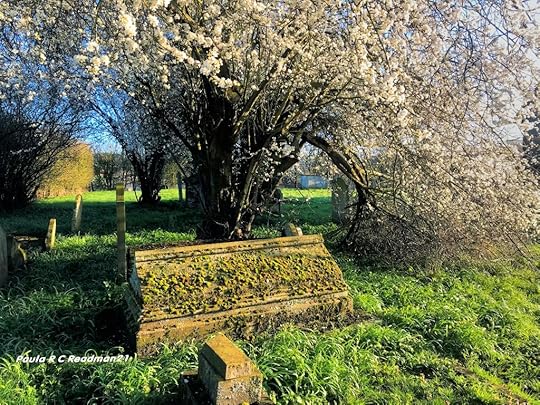 A grave in Bradwell church.
A grave in Bradwell church. They die ~ the dead return not ~ Misery sits near an open grave and calls them over ~ A youth with hoary hair and haggard eye ~ They are the names of kindred friend and lover, which he so feebly calls ~ they all are gone ~ Fond wretch, all dead! Those vacant names alone, this most familiar scene, my pain ~ These tombs ~ alone remain.
Death was written by Percy Bysshe Shelley & was published by Mrs Shelley after her husband’s death 1824.
Death is nothing new. We are all born, and at some point Death will claim us all. In the centuries before, life was far shorter and early deaths more common. Though these days our lives maybe longer lived, it does all depends where in the world you’re born. Here in Britain, we have the national health service, clean water, clean air, health and safety in the work place and access to inexpensive food and medicines like off the shelf pain killers etc. Though this pandemic has brought about many changes to all our lives, and once again death is now staring us all in the face on a daily basis with no cure for any of us.
The Victorians had a much more personal relationship with death. A mother might have given birth to six children in hope that three of her children might survive into adolescence. I know while researching my own family history twelve children wasn’t uncommon (Though myself I couldn’t imagine going through that many pregnancies) My ancestors made researching member of my family more difficult by naming children after ones that had passed away. At first I thought this was to keep the memory of the child alive, but no. It was to save money as once a child was registered you could use that name again, without further payment.
Most of us are able to plan ahead with our lives knowing we can have an active life well into our eighties and even beyond by keeping fit, eating well and with the luxury of good health care with our modern medicines and treatments as well as a better understanding of personal hygiene to protect us and our families. The pandemic has reinforced the important of keeping ourselves and love ones safe from invisible gems. Thank Goodness for washing machines and household cleaning products.

It wasn’t just the Victorians who created a new industry out of mourning, when Queen Victorian dressed in black and spent years grieving the loss of her beloved Albert. The fear of death is deep rooted across the world, but the great fear of all is one of man’s oldest, and is more profound even than the fear of death itself. The fear of premature burial.
A whole industry grew out of building devices to make sure your love one has truly passed over. Although the obsession with premature burial reached its height in nineteenth-century Europe, its history dates back further. Today with our modern hospitals and medical machinery that allows doctors to diagnosis death beyond all shadow of a doubt, we no longer have to fear premature burial.
 A Stay Safe Coffin Device
A Stay Safe Coffin DeviceEdgar Allan Poe’s The Premature Burial, a short horror story published in 1844 in The Philadelphia Dollar Newspaper. The narrator in Poe’s story had more reason than most to be scared, suffering as he did from catalepsy, a neurological condition which produces intermittent episodes of profound bodily paralysis, closely mimicking death itself. Many believed that Poe lived in fear of such attacks of catalepsy and dreaded being placed in his family vault whilst still alive.
In 1896 an ingenious device was invented by Count Karnice-Karnicki, chamberlain to the Tsar of Russia. He constructed an apparatus consisting of a tube which passed vertically out of the coffin lid and ended in an airtight box above ground-level. On the chest of the corpse was a glass sphere attached to spring which ran the length of the tube and was connected to a mechanism inside the box. The idea was any slight movement of the corpse would cause the lid of the box to fly open to admit air and light as well as activate a flag, a light and a loud bell to attract the attention of anyone wandering through the graveyard. The device could be hire for twelve shillings, at the turn of the century, and would be used for two to three weeks before being removed and available for someone else to hire.
The problem with these devices were the false alarms, which would cause the bodies to be dug up, only for the poor relatives to find the bells and flags had been trigged by rigor mortis fading, or abdominal eructation.i.e. gas leaving the body as it breaks down.
Hopefully, we will all be lucky enough to live a long and happy life beyond this pandemic.
As a new season begins and the rebirth of nature starts, let me wish you all a wonderful weekend.
 Happy Spring Equinox: Blessed Be Our Mother.
Happy Spring Equinox: Blessed Be Our Mother.
March 29, 2021
Those Not So Funny Names
“Where do I live when I’m at home?” The gypsy laughed to me. “My heartstone’s set in good red loam, and the sky was raised for my own roof-tree. As he hoists his shell on a shiny track, I carry the sky, like a snail, on my back, till it dabbles its eaves in the sea.
Beatrice Ravenel October 1920 poetry: A magazine of verse

Gypies or as they are the Romani people have their origins in the Indian subcontinent and began migrating westwards in the 11th century. The first Romani people arrived in Great Britain at the 16th century to escape conflicts. In 1506 it was recorded Romani people in Scotland, arriving from Spain and they made their way into England by 1512. Soon law makers began to pass laws to stop Romani immigration and assimilation of those already here. In 1530 during the reign of Henry VIII, The Egyptians Act banned Romanies from entering country and required those already living here to leave within sixteen days. Failure to do so could result in confiscation of property, imprisonment and deportation. In 1554 the Act was amended which allow the Romanies to escape prosecution if they gave up their nomadic lifestyle.
The word Gypies is an exonym a name given to an outsiders and is based on the belief that Romanis came from Egypt hence the Egyptians Act. The name calling is deeply offensive and is associated with discrimination. In England the name Gypies is given to people who are seen as dishonest or thieving.
Why am I telling you this? As a small child I was called a gypsy, both in my junior and senior schools. It was a name calling that followed me. “You’re nothing but a dirty gypsy.”
My mother had olive skin, jet-black hair and piercing-blue eyes and I always wondered if she had Gypies blood. I grew up at a flour mill and have never travelled in a caravan so I never understood where the name calling came from. Children tend to get their name calling from what they hear others saying. Now in my 60’s I never expected to be called a Gypsy again, and especially not while standing in my garden by a house I worked hard to buy.
Yesterday while working in my garden, my neighbour and good friend came over to bring me some onion sets they had left over from their planting. We were chatting. It was all lighthearted banter, as I remined them of when we first got to know each other. They had given me onion set then thirty odd years ago as they leaned over the fence and chatted to me as I was tidying up my garden.
I like to think my garden is tidy, but we all have a corner where we hid odds and ends away. My vegetable garden still had its winter look, which is why I was busy working in it. Cutting back ivy, digging over beds and planting my potatoes. My neighbour looked around and said, “My goodness you’re such a Gypsy… Come on, Paula tidy this mess up.”
An arrow went straight through my heart. My inner child felt the pain at hearing such a old familiar word that followed me around childhood playgrounds and journeys home. It was a name of shame. Not being quite good enough. After finding my voice again, I said, “Well, I wasn’t expecting to be called a Gypsy again at my time of life. I have been rather busy and I am the only one to look after the garden.”
I know my neighbour was unaware of my childhood pain and I guess my point in writing this post is to show the word Gypsy still carries the offensive and discrimination it has always had since the Romani people first arrived in Britain.
I of course said nothing of my hurt. My friendship means the world to me. We all forget how painful words can be at times, and I hope my post reminds you all to stop and think before you call someone a name other than their own. Every adult carries their inner child who never forgets the past hurts.
Have a peaceful, beautiful day.
I shall be busy in my garden today.
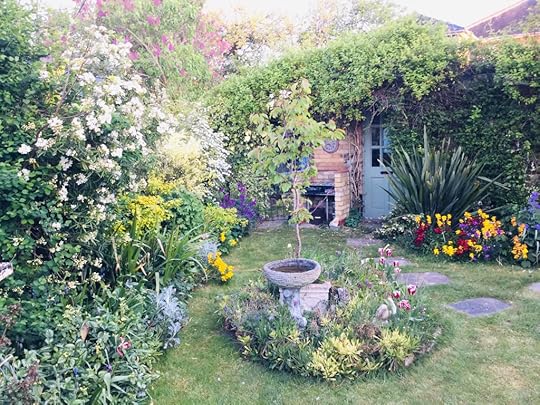 This photo was taken last year.
This photo was taken last year.
March 28, 2021
Another Round of Editing
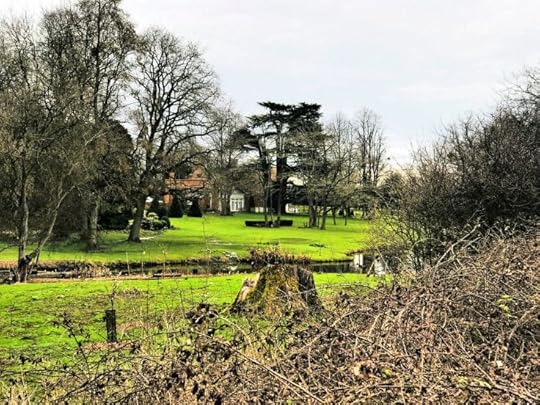
When you take up writing you just don’t know how many hats you have to wear to get the job done. From a writer, to editor and finally marketing guru. This morning I planned to focus on finishing my Alice story but landed up editing my submission to Cafelit 10 and correcting some newly discovered mistakes in Seeking The Dark. I think I’ve managed to find all the mistakes in both.
Dare I say it?
I’m hoping to finish my unfinished jobs some time soon.
Granny Wenlock is building a huge fan base. Bless her. Her new merchandise has allowed me to promote The Funeral Birds from a new angle which has been fun. The Funeral Birds book now has a lovely new review on Amazon too. My son is wanting to buy some Granny Wenlock cups for his wife to be and himself. Hopefully there will be some New Age Witches who will buy up the Granny Wenlock line too.
Next week the weather forecast in England is hot and sunny. I have a couple of jobs to finish off in the garden and I need to plant my vegetable too especially my potatoes and tomatoes plants. I’m a vegetarian so I love having my food fresh from my garden. The soft fruit bushes I moved last year have taken very well and have fresh green leaves on them.
Have a great week. Chat again soon.
March 27, 2021
Good Ole Granny,
I’m still reeling from seeing the merchandise with Granny Wenlock on it. Granny Wenlock has become a story waiting to be told. It’s going to be a dark one at times, but there will also be a lighter side too.

There was a time when she was a young woman when she dreamed of finding true love, and starting a family much as we do in today’s world, but the world of the 1600’s was a very different place.
I shall find it very interesting to weave together stories as Dave and Joan investigate cases that are brought to them. I must confess to knowing very little about this time in Britain’s history.
Today, my Granny Wenlock cup arrived. I took one over to my neighbour, Joan. She was so excited to see it and now it has become her breakfast cup.
If you would like to check the merchandise for yourself here’s the link


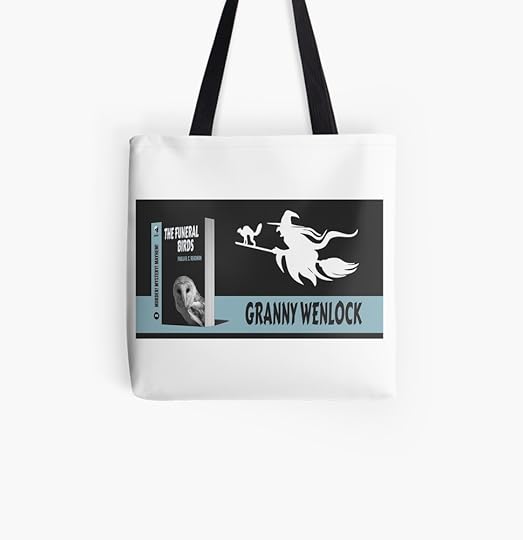



I hope you enjoy see it. I can’t wait to see my cushion cover though Demain Publishing has add the Funeral Bird book cover too so it looks as though I shall be ordering two covers for my sofa. 


Chat again soon.
March 25, 2021
Well, I never expected that!
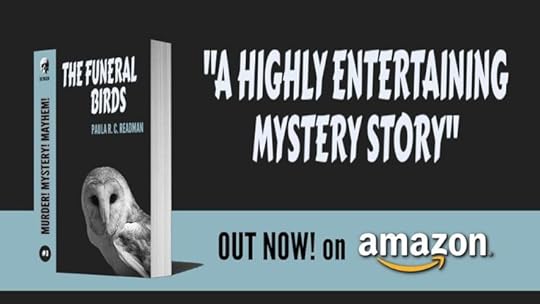
Yesterday, I received an amazing email, one I hadn’t expected. When I set off on my writing journey there was a few far-fetch dreams I had. Of course, I kept them to myself. Never imaging they were possible. I’ve always thought others would think them rather silly, but still we can all but dream our dreams. Life would be boring without them.
Creating characters is rather like giving birth without all the nappy changing and dealing with childhood illnesses. I wouldn’t say without sleepless nights too, as I’ve had plenty of them worrying about how my books would sell. Books are like your children, you never stop worrying about them.
Will others love them as much as you do?
When you create your characters they grow on you. You fall in love with them no matter whether they are good or bad. They become a big part of your life as they develop. You know them better than anyone else in your life and what really makes them tick.
When I created Granny Wenlock she was just a voice in my head. No, not in my head, but the head of the narrator of The Funeral Birds. Dave Cavendish’s ancestor Granny Wenlock knows people far better than Dave. The fact she’s dead and died 420 years ago doesn’t bother her. She has a deep insight to people and the human nature. The one thing that never changes whoever we are is our basic instinct in the way we think and feel.
The Funeral Birds is published by Demain Publishing and they have now set up a shop where they are going to be selling an array of goods with their book covers printed on them. This will included my book cover which is amazing to me.
I was taken back to be invited by the publisher to add my book to their list. To see it on a cup, pillow or phone cover is amazing and beyond anything I could’ve imagined when I originally wrote the story to send into the BBC short story competition many years ago.
So if you would like to see what is on offer in the Demain Publishing Shop, please check out this link. Of course my book cover, The Funeral Birds isn’t featured among them yet, but I will keep you posted. 
The book is available, and has plenty of reviews if you would like to check them out. There’s a great one on this link.
Or Go to Amazon where you can buy the ebook or paperback on this Link
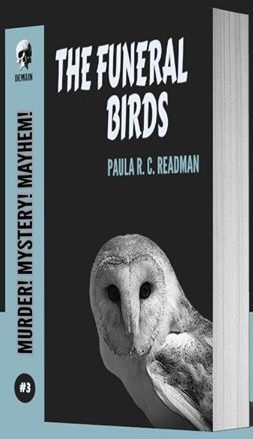 The Funeral Birds: a Short Sharp Read.
The Funeral Birds: a Short Sharp Read. P.S Granny is returning for further adventures soon.
[image error]
March 24, 2021
The Way Through The Woods
They shut the road through the woods
Seventy years ago.
Weather and rain have undone it again,
And now you would never know
By Rudyard Kipling’s poem The Way Through the Wood, Published with “Marklake Witches” in Rewards and Fairies (1910).

Rudyard Kipling’s The Way Through The Wood is one of my favorite classic poems. It reminds me so much of my love of walking through woods as a child in hope of coming face to face with deers, foxes or badgers. I thought I would use the poem as the opening to this post along with some of the photos I took yesterday.
The walk we took lasted for 126 minutes as we headed up into Tarecroft wood. The Tarecroft wood and Rivenhall Thick are two ancient woods that can be traced through medieval surveys, sixteenth and seventeenth century maps. We passed Whiteheads Farm as we made our way to Tarecroft Wood first to then circle round back through Rivenhall Thick on our way home.
 Here on this map you can see how close these woods are together.
Here on this map you can see how close these woods are together. Both of these woods were grown for their valuable resources when Cressing Temple was owned by the Knights Templars. They were at one time much larger than the small remnants we walk through now. The underwood are the smaller trees and shrubs that grow beneath taller straighter trees that are grown for timber trees. This is known the second crop, or underwood and coppice.
Coppicing is a method of producing a huge amount of fast growing, sustainable timber without the need to replant. Coppiced trees already have a fully developed root system, so regrowth is rapid. Different species of trees and shrubs react differently to being coppiced. The stump appears moribund all through the first year after coppicing and then springs into life the following year. This is done on rotation. A small area of a woodland is cut each year in sequence leaving the areas uncut to grow on for between 15 and 20 years for chestnut, and about 7 years for hazel. When an area of coppice is cut, it is all cut down to create a clearing. This allows wild flowers to grow such as primroses, wood anemones, dog’s mercury and, of course, our beautiful English bluebell.
 Dog’s Mercury and wood anemone, also known as Windflower
Dog’s Mercury and wood anemone, also known as Windflower This periodic coppicing encourages the individual trees to live for up to hundreds of years. If the coppice cycle is managed correctly it can increase biodiversity in the woodland because of the beneficial effects of varying light levels reaching the woodland floor, and the range of different aged trees and stools in the woodland. The wood is used for fuel, charcoal, hurdlework, and fencing. Today when walking through Rivenhall Thicks you can see where it is still being worked for coppicing. As a place of work, we must understand its importance as a working wood for the future of our British wildlife. Quite often you can see tracks of deer and muntjac as they move across the countryside is search of shelter and seclusion.
 Path out of Tarecroft Wood
Path out of Tarecroft WoodAfter leaving Tarecroft Wood, which hasn’t been worked for many years, on entering Rivenhall Thick you can see the difference not just in the variety of wild flowers and wildlife but you can see a working wood in action as it would have been done for hundreds of years. It’s like a living museum when humans worked hand in hand with Mother Nature.
It is underneath the coppice and heath, and the thin anemones. Only the keeper sees that, where the ring-dove broods, and the badgers roll at ease, there was once a road through the woods.
by Rudyard Kipling from The Way Through the Wood
First slide picture is of a chaffinch nest. A firmly woven structure made chiefly of moss and lichen, together with blades of grass, birch bark, hair, feathers, wool and leaves. Second slide: Turkey Tail (bracket fungi) Third slide: Moss covered log with ivy. Fourth slide: The bridge to Rivenhall House. Fifth slide: Rivenhall House.





Have a great day.
I look forward to sharing the changing season with you in future posts.
March 22, 2021
A Brighter New Day
On Saturday I went for my Covid vaccination. It floored me. I had heard from other people via my husband that they had a rough time of it but you hope that you will be different. Yesterday, I didn’t quite know what to do with myself so I went back to bed for a while. Then my husband and I went for a walk around the village. By the time we got back I was ready for bed again. This time I slept through to nine o’clock at night.
My husband came up and lay on the bed, chatting to me about his Facebook page when our cat, Willow joined us. She lay along side him. Russell and I got into a heated discussion about a post he had put up on his page, but he couldn’t find in the main thread.
Willow got up from where she had been lay and put her front paws on his chest and meow at us. It was as though she wanted us to stop our arguing. Bless her. She had come to us from a house where there was a lot of shouting and raised voices. So I’m guessing she was putting a stop to us.
The promotion of Stone Angels over the weekend went well, I think, but only time will time whether I’ll see any difference in sales of my next book , Seeking The Dark or not.
If you still haven’t had enough of me promoting my work at you, you may like to check out this special deal. You can download thirteen amazing tales for the grand sum of 99p/99cents. Click here for the LINK
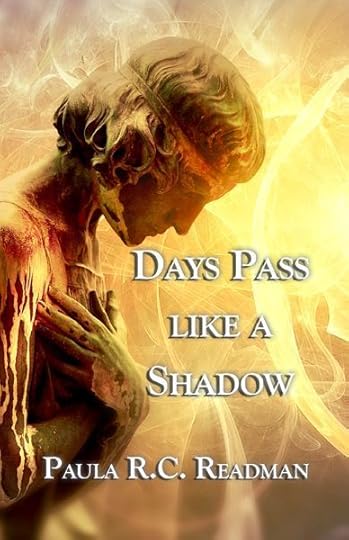 Days Pass Like A Shadow is now available as a kindle download for 99p/99cents for the next three day.
Days Pass Like A Shadow is now available as a kindle download for 99p/99cents for the next three day. To find out more about the dark tales in this collection please read this review here Or go to your Amazon page for Days Pass like Shadow using this link here:
Please check out my book trailer below for Days Pass Like A Shadow
Within the pages of Days Pass like a Shadow are thirteen dark tales covering the theme of death and loss. At the centre of every story is a beating heart. For the reader to make the journey to that centre, along the flowing veins of words, all they need is a few minutes during a lunch break, or at the end of the day. The reader will be introduce to a rich and diverse collections of characters¬- gardener, a serial killer, time traveler, sleepwalker and many more. On the Streets of Kabul in Afghanistan, a soldier faces a life-threatening situation while searching for his missing comrade and childhood friend among the narrow alleys. Perfect Justice finds a secretary planning a murder. Shelved takes a reader into the librarian’s office, while Burning the Midnight Oil has a son uncovering the truth about his dying mother. So put your feet, relax with a cup, or glass of your favourite beverage and let’s begin first with The Meetings…
March 21, 2021
Still Free to Download: Stone Angels
I’m hoping that by offering Stone Angels for free I might pick up new readers. So far Stone Angels has reached the top of several categories.

Stone Angels seems to do better in America but this might because I have marketed it with two American promotional sites.

So if you would like to read about the artist James Ravencroft who seeks ten perfect models for ten masterpieces. Then just click on this link STONE ANGELS




